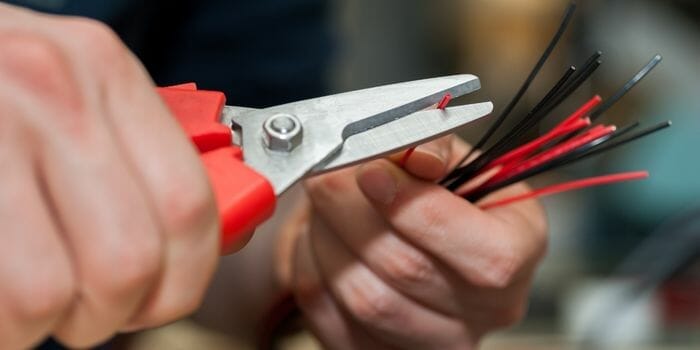How Many Feet and Gauge Speaker Wire Do I Need For My Car?
Many individuals struggle with selecting the appropriate wiring for their car speakers, often unsure about the required length. The ideal wire length can be determined by calculating the speaker wiring method.
A lengthy wire introduces more resistance, potentially diminishing the power of the current.
Conversely, a shorter wire results in less resistance and reduced power loss. The wire quality also plays a significant role in this equation.
To determine the speaker size, various options like 4-inch speakers with good bass or 6.5 or 6×9 car speakers can be considered. These speaker wires are advantageous not only for their suitability but also for their reasonable pricing.
The article provides a comprehensive guide to the entire wiring process and understanding the characteristics of the wire. If you’re interested in learning more, the article offers valuable insights.
How Many Feet Of Speaker Wire Do I Need?
To ensure proper wire routing, the required length of wire is influenced by various factors. Allocating approximately 20 feet per front speaker and 10 feet for a rear speaker is generally sufficient.
The wire length is contingent upon the speaker’s location, with shorter lengths needed if the amplifier is in close proximity to the speaker. Conversely, if the amplifier is distant from the speaker, longer wires will be necessary.
In the context of installing 6×9 speakers in the rear deck, the article delves into the specifics.
When considering the use of crossovers and their placement, it is recommended to double the wire length for each speaker if the amplifier crossover is applied.
For those seeking guidance on wire size, a suggested amount for a complete installation is 75 feet of wire.
This estimation is typically adequate, but if the number of speakers exceeds expectations, it’s advisable to include an extra 15 feet of wire. This additional length accommodates potential challenges in routing and connecting the wires, ensuring a seamless installation process.
Types Of Speakers Wire
Car stereos typically utilize two main types of wires: standard wire and solid wire.
Standard Wire:
Standard wires in the car audio systems are entirely composed of copper. These wires offer ease of connection as they bend readily and are not prone to breaking.
Additionally, standard wires exhibit high conductivity, ensuring efficient electrical flow, and they possess low resistance, contributing to optimal performance in the car stereo setup.
Solid Wire:
The solid wire, although still composed of copper, is structured as a bundle containing 16-60 individual conductors.
This type of wire is more susceptible to breaking, and it features only a single conductor.
Solid wires are not commonly employed for car speakers; instead, they find utility in home audio setups or other locations where flexibility and durability may be less critical compared to the demands of a car environment.
14 vs. 16 Gauge Speaker Wire or 18 Guage
In my perspective, an 18-gauge wire is suitable for low-power car speakers. It works well for scenarios like 50 watts at 4 ohms or 100 watts at 8 ohms, especially when the wire length is around 50 or 100 feet.
However, if both the power and the length of the wire increase, an 8-gauge wire may not suffice; in such cases, opting for a 16-gauge wire is recommended.
When dealing with higher power requirements and longer lengths, such as over 100 feet, it becomes necessary to decrease the gauge number.
For instance, moving from 16-gauge to 14-gauge compensates for the increased length.
Essentially, a reduction of two gauge numbers signifies an increase in wire thickness, indicating that as you seek more power, the gauge number decreases.
This gauging method accounts for adjustments in wire thickness based on the power and length requirements of the car speaker system.
3 Things To Find The Guage OF Wire For Speaker:
To determine the appropriate wire size, consider three key factors:
- The power output of the amplifier or stereo.
- The impedance of the speaker.
- The length of the cable.
Doubling The Size Of The Wire:
If you select a speaker wire with a relatively small thickness, but the distance it needs to cover is short, doubling the wire can enhance its performance.
Essentially, if the thin wire is incapable of carrying the full current, doubling it effectively thickens the overall conductor, allowing it to handle the complete current more efficiently.
Some More Information About Wire:
In recent years, Copper-Clad Aluminum (CCA) wire has become prominent in the market. Despite its rising cost, CCA wire is characterized by a composition of aluminium at its core, coated with a thin layer of copper.
Aluminum offers a lighter weight compared to copper, but its conductivity is 61%, which is lower than that of copper. Additionally, aluminium exhibits a higher resistance at 39%, potentially leading to a decrease in current.
To compensate for the increased resistance in aluminium and achieve comparable power and capacity to copper, it becomes necessary to double the thickness of the wire.
This adjustment helps mitigate the conductivity differences between aluminium and copper, ensuring the wire can effectively handle the desired power and capacity.
General Tips and Tricks:
Copper wire has become increasingly expensive due to its high conductivity and quality.
For those who find it challenging to afford copper wire but still need its functionality, there are alternative steps to achieve similar results.
- If your power output is relatively low, not exceeding 50-60, you can consider reducing the gauge by one, providing comparable performance to copper.
- Another approach is to double or triple up on a smaller gauge wire, effectively mimicking the conductivity of copper.
- Additionally, if the distance the wire needs to cover is short, you can opt for a shorter length. This reduction in distance helps minimize resistance in the wire, ensuring that it performs effectively even if the material doesn’t match the conductivity of copper.
These strategies offer viable alternatives for individuals seeking cost-effective solutions without compromising too much on performance.
You might be interested in JBL and Infinity Speakers Comparison
Frequently Asked Questions
Top related questions asked from CarSoundMaster.
Q. Should I use a 14 or 16-gauge speaker wire?
A. For a wire length of 36 feet, it’s typical to use a 16-gauge speaker wire.
However, if the wire needs to span a longer distance, ranging from 75 to 100 feet, a 24-gauge speaker wire is a suitable alternative.
Q. How to connect the speaker wire?
A. A speaker wire typically consists of two leads: one positive and one negative. The positive lead often comes with a connector, but if it lacks one, you can connect it by joining the ends of both wires.
Q. How much wire is needed to use?
A. Connect a wire from the amplifier or receiver to each speaker location.
To determine the wire size, measure the distance and add a few extra feet to account for any potential shortage if the wire falls short.
Q. Is it possible that a speaker cable is too thick?
A. While a thick wire may be substantial, there is no additional advantage to having an excessively thick wire for the speaker.
In essence, there is no necessity for an overly thick wire.
However, it’s worth noting that a positive aspect of using a thick wire is its effective performance.
Q. If the wire is too thin what happens?
A. Using a wire that is too thin can pose a problem when subjected to sufficient current. In such cases, the wire may melt, causing your amplifier to cease functioning.
Consequently, no sound will be produced by your speaker until you replace the wire with a suitable alternative.
Q. Can the electrical wire be used as a speaker wire?
A. Indeed, it is possible to use electrical wire as a substitute for speaker wire.
Nevertheless, it’s worth noting that the sound produced may differ, as various wires can impart unique characteristics to the audio compared to thicker speaker wires.
Feet and Gauge Car Speakers Wire – Conclusion
The amount of current reaching the speaker is contingent upon the quality of the wire used for current delivery.
Optimal performance is achieved when the wire has good conductivity, resulting in lower resistance. Thicker wires generally outperform thinner ones.
The details provided in the above article encompass all the relevant information. I trust this information aids you in determining the appropriate wire size.
Stay safe and have a wonderful day!







